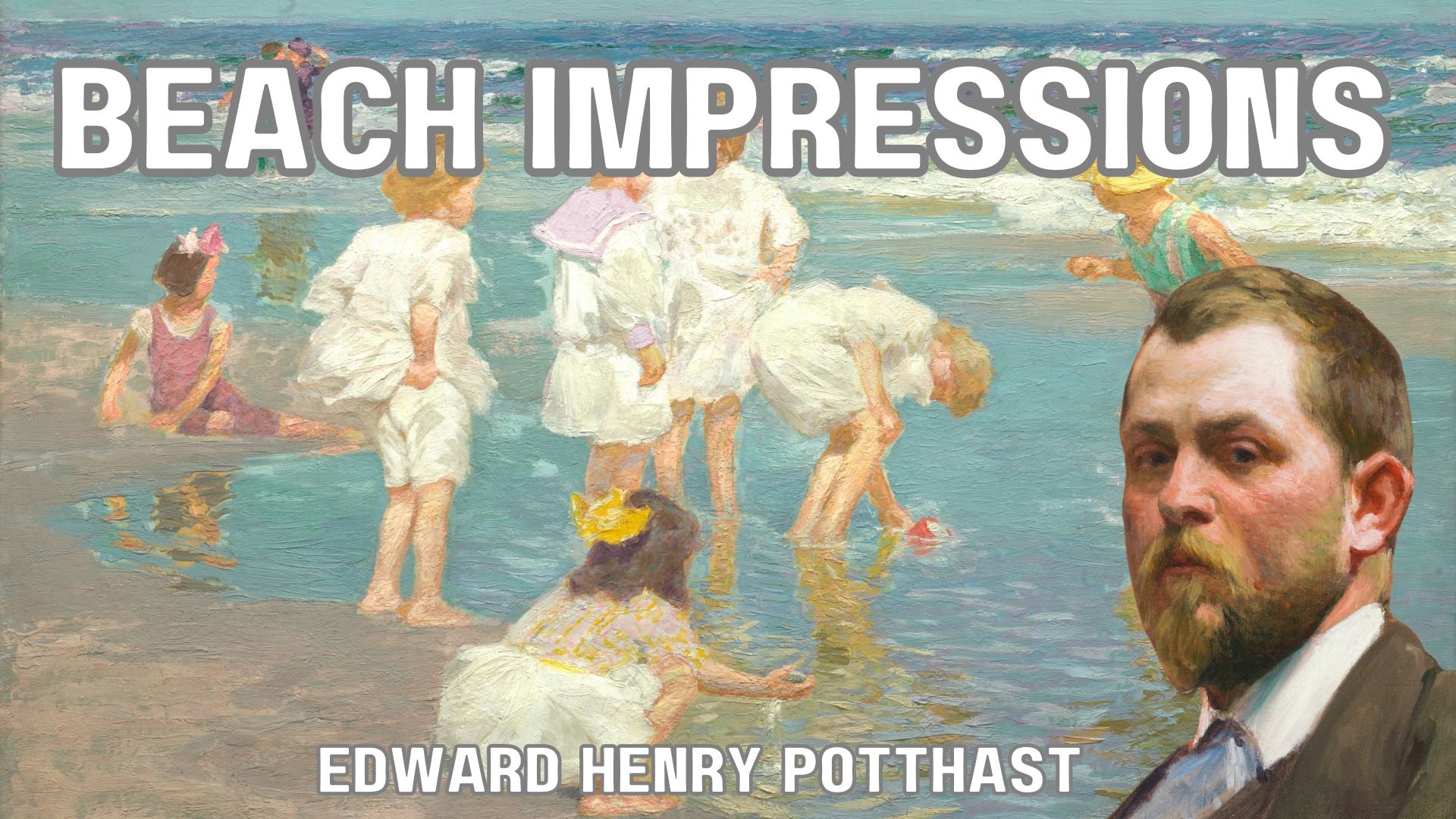Table of Contents:[hide]
Edward Henry Potthast, a name synonymous with the brilliance of American Impressionism, left an indelible mark on the art world with his sun-soaked beach scenes and vibrant compositions. In this comprehensive biography, we delve into the early years, education, personal life, and style development of this remarkable artist.
Early Years and Education
Born on June 10, 1857, in Cincinnati, Ohio, Potthast hailed from a family of artisans. His artistic journey commenced at the tender age of twelve when he became a charter student at Cincinnati's new McMicken School of Design. Under the tutelage of Thomas Satterwhite Noble from 1879 to 1881, Potthast imbibed the dark palette and rich technique derived from Noble's instruction under French artist Thomas Couture.
European Sojourn
Potthast embarked on his first European trip in 1881, studying in Antwerp with Polydore Beaufaux and Charles Verlat. His artistic pilgrimage led him to Munich, a hub for Cincinnati artists, where he studied under Carl Marr at the Royal Academy. A visit to Paris and a brief stint at the Academie Julian enriched his artistic repertoire.
Stylistic Evolution
Returning to Cincinnati in 1885, Potthast's paintings bore the influence of the Munich School and Dutch painting tradition. However, a transformative period in Paris in 1886, studying under Fernand Cormon and possibly Jules-Joseph Lefebvre, marked a pivotal shift. Impressionism became his newfound passion, evident in light-filled canvases like "Sunshine" exhibited at the Paris Salon of 1889.
Relocation to New York
In 1895, Potthast made a significant decision to leave Cincinnati for New York City. Amidst setting up his painting studio, he undertook illustration commissions for renowned publications like Scribner's, Century, and Harper's. Exhibitions at the Art Institute of Chicago and the National Academy of Design solidified his reputation, culminating in his election as a full academician in 1906.
The Beach as Muse
Post-relocation, Potthast's art found solace in scenes of leisure at the beach and rocky harbors. Seaside art colonies in Massachusetts and Maine became his summer retreats. His love for the beach, evident in paintings of children and families, showcased a serene and private side of the artist.
Legacy and Influence
Edward Henry Potthast passed away on March 9, 1927, leaving behind a legacy reflected in public collections across the United States. Museums such as the Metropolitan Museum of Art, New York, and the Art Institute of Chicago proudly display his works.
Investment in Potthast Artwork
Despite his somewhat private life, Potthast's depictions of beach scenes, especially those featuring children, have garnered significant attention. His artwork, considered an investment for the future, commands steep prices in the art market.
In essence, Edward Henry Potthast's artistic journey is a testament to the transformative power of exposure and experience. From the dark tones of the Munich School to the luminosity of Impressionism, Potthast's evolution as an artist mirrors the dynamic shifts in the art world during his time.
FAQ's
-
Who was Edward Henry Potthast?
- Edward Henry Potthast was an American Impressionist artist known for his vibrant beach scenes and landscapes. Born on June 10, 1857, in Cincinnati, Ohio, Potthast made significant contributions to the art world during the late 19th and early 20th centuries.
-
What is Potthast's artistic style?
- Potthast's early works were influenced by the Munich School and Dutch painting tradition. However, after his transformative experience in Paris in 1886, he embraced Impressionism. His later paintings feature light-filled canvases, especially focusing on beach scenes and leisurely activities.
-
Where did Potthast study art?
- Potthast began his artistic journey at Cincinnati's McMicken School of Design. He studied under Thomas Satterwhite Noble in Cincinnati, followed by stints in Antwerp, Munich, and Paris, where he absorbed diverse artistic influences.
-
When did Potthast start painting beach scenes?
- Potthast's love for beach scenes became prominent after his conversion to Impressionism in the late 1880s. Following his move to New York in 1895, he specialized in capturing the tranquility of people enjoying holidays at the beach and rocky harbor views.
-
Why did Potthast move to New York?
- In 1895, Potthast decided to leave Cincinnati for New York City to establish himself as an artist. While setting up his painting studio, he also took on illustration commissions for well-known publications like Scribner's, Century, and Harper's.
-
Did Potthast have a preferred subject matter?
- Yes, Potthast's preferred subject matter revolved around beach scenes, often featuring children and families. His paintings beautifully captured the peaceful and leisurely moments by the shore.
-
What awards and recognition did Potthast receive during his career?
- Potthast won the Thomas B. Clarke prize for best figure painting at the National Academy of Design in 1899. He was elected an associate of the academy that same year and became a full academician in 1906.
-
Where can one find Potthast's paintings today?
- Potthast's paintings are housed in public collections across the United States, including prestigious institutions such as the Metropolitan Museum of Art in New York, the Art Institute of Chicago, and the Cincinnati Art Museum.
-
Did Potthast have any significant impact on art movements?
- Potthast played a crucial role in popularizing Impressionism in America. His immediate and irrevocable conversion to the style after exposure to the Grcz colony in Paris showcased his influence on the American art scene.
-
Is Potthast's artwork considered a good investment?
- Yes, Potthast's beach scenes, in particular, are regarded as a solid investment in the art market. Their serene and timeless quality, combined with the artist's significant contribution to American Impressionism, contributes to the appeal and value of his work.
Prints and Canvas Panels
A curated collection of Edward Henry Potthast's worls available as prints and canvas panels in a wie range of sizes.
Related Articles
American Impressionists





